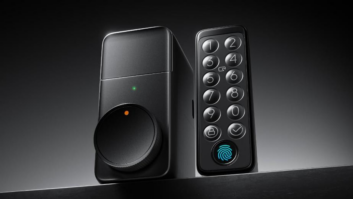
Dunstable, England — Global smart-TV shipments are on course to reach 228 million units by 2018, but TV manufacturers may be starting to reassess their strategies due to limited return on investment and a new focus on Ultra HD TVs.
That is the assessment in a new global smart-TV study released Friday by FutureSource Consulting.
The report said 90 million smart-TV units shipped worldwide in 2013, and will grow at 21 percent CAGR to 2018.
“In developed regions, 30 percent of homes will own a smart TV by the end of 2014, rising to 70 percent by 2018,” stated Jack Wetherill, FutureSource senior market analyst. “And people aren’t just buying the feature — they’re using it too. At present, around 80 percent of the smart TVs in people’s homes are connected to the Internet, with the pervasion of embedded Wi-Fi and auto-boot on track to lift this figure to over 90 percent by 2016.
“Our recent round of international consumer research, surveying more than 4,000 people, shows that over half of owners are using a service on their smart TV at least once a week, with 40 percent of U.S. owners saying they use a service every single day,” he continued.
However Wetherill warned manufacturers are finding limited opportunities to monetize apps or content due to the supply of free or subscription video, “and far lower interest in other genres or general web use — a radically different profile to the mobile market.”
Providing exclusive content can be challenging, he added, while the ongoing cost of platform development and support for apps developers is proving costly with not much return.
“We could be advancing beyond the point of no return,” Wetherill said. “Consumers increasingly expect smart features and apps, and there is no way for a manufacturer to run a feature delete on its products and remain competitive, so the market will continue to develop.”
As a result, Wetherill believes more TV brands will move toward platforms developed in association with major third parties, like Google’s Android TV. Sony, TPVision and TCL have each indicated their plans to offer Android TVs in 2015.
Although Samsung has a sufficiently high share in smart TVs to maintain its own platform and apps program, as well as seeking exclusive content, is also promoting Tizen as an open OS alternative to Google, Wetherill said.
“Although the industry spotlight is firmly focused upon UHD and curved screens, smart TV continues to pervade the market as a value-added feature, and [user-interface] refinements like voice and gesture recognition, tile-driven navigation and device mirroring appeal to consumers at the point of sale as part of a premium set proposition,” he continued.
As for delivering smart-TV benefits via external media players, Wetherill said: “Smart TV integrates broadcast and broadband services within a single user and control interface, setting it apart from digital media adaptors and the like, as well as opening the door to interactive long-term concepts like targeted ad insertion and web/broadcast overlay.”
For the complete report, contact Futuresource-Consulting.com.













